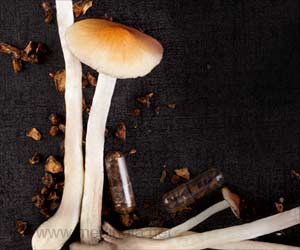- Two antioxidants in mushrooms can help fight aging and improve health
- Ergothioneine and glutathione are the antioxidant compounds found in mushrooms
- Antioxidants in mushrooms helps fight against oxidative stress
Oxidative Stress
When the food is converted into energy, oxidative stress occurs because some free radicals are produced. Free radicals are oxygen atoms with unpaired electrons that damage the cells, proteins and even DNA. Free radicals are highly reactive atoms that travel through the body seeking to pair up with other electrons. Replenishing antioxidants in the body may help protect against oxidative stress.
"The free radical theory of aging has been around for a long time that says when we oxidize our food to produce energy there’s a number of free radicals that are produced that side products of that action and many of these are quite toxic," said Beelman.
"The body has mechanisms to control most of them, including ergothioneine and glutathione, but eventually enough accrue to cause damage, which has been associated with many of the diseases of aging, like cancer, coronary heart disease and Alzheimer’s."
Glutathione helps maintain immune function, detoxify carcinogens and other toxins. Optimum levels intracellular glutathione is essential in maintaining health and preventing diseases.
"We found that the porcini has the highest, by far, of any we tested," said Beelman. "This species is really popular in Italy where searching for it has become a national pastime." Common types of mushrooms like the white button had fewer amounts of the antioxidants but had higher amounts than most other foods.
The research team plans to conduct further research to identify the role of ergothioneine and glutathione in decreasing the likelihood of neurodegenerative diseases like Parkinson’s disease and Alzheimer’s disease.
"It’s preliminary, but you can see that countries that have more ergothioneine in their diets, countries like France and Italy, also have lower incidences of neurodegenerative diseases, while people in countries like the United States, which has low amounts of ergothioneine in the diet, have a higher probability of diseases like Parkinson’s Disease and Alzheimer’s," said Beelman.
"Now, whether that’s just a correlation or causative, we don’t know. But, it’s something to look into, especially because the difference between the countries with low rates of neurodegenerative diseases is about 3 milligrams per day, which is about five button mushrooms each day."
Reference:
- Michael D. Kalaras, John P. Richie, Ana Calcagnotto, Robert B. Beelman. Mushrooms: A rich source of the antioxidants ergothioneine and glutathione. Food Chemistry, (2017); 233: 429 DOI: 10.1016/j.foodchem.2017.04.109
Source-Medindia















